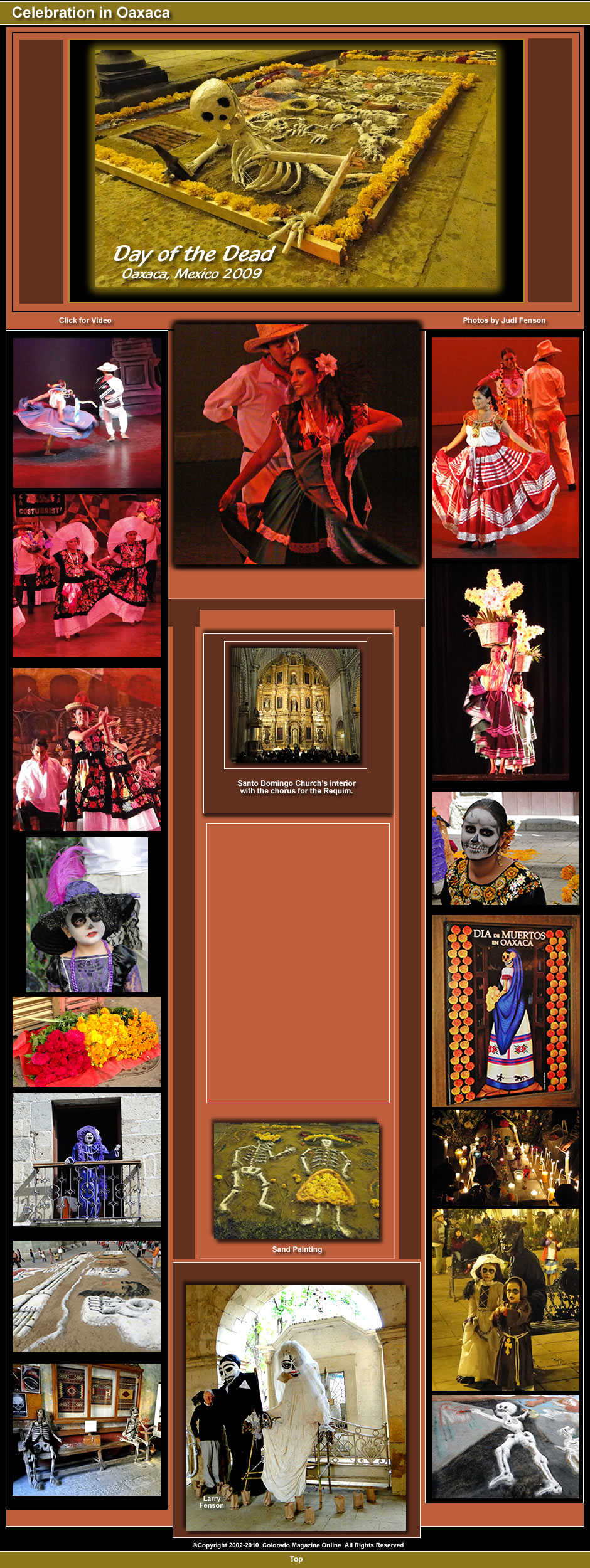

Oaxaca is easily one of Mexico’s most colorful and festive towns all of the time. And its citizens go all out for holidays and festivals, adding even more life to the city. Oaxacans seem to especially relish their Day of the Dead traditions, regarded as one of the best in Mexico. We visited Oaxaca to witness these festivities at the end of October, 2009.
The Day of the Dead is a time for remembering and celebrating the lives of departed loved ones. And Oaxacans do so with exuberance. Many areas in the central plaza or zocalo (perhaps the most appealing in all of Mexico) are decorated with altars and sand paintings honoring the dead. The altars contain pictures and favorite foods of the departed and flowers (predominately marigolds). It is believed that the aromas of the food and flowers help the souls find their way back. Marigolds, called the flower of death, are believed to be particularly effective in this regard. The scenes are macabre with a heavy emphasis on skulls and skeletons. Many children and adults dress up in wild costumes and masks, most in the same macabre skeleton and skulls theme. On the surface, this aspect of Day of the Dead strongly resembles Halloween.
One of the main streets leading to the plaza is also closed for several blocks to make room for additional street art and food vendors.
All kinds of celebratory activities take place in the plaza including band concerts, singing and dancing performances by school groups and clubs, costume competitions and wild spontaneous performances and dancing. Some of the activities are quite carnival-like and are a little hard to reconcile with the notion of remembrance of the departed. Maybe they are best interpreted as a parallel celebration of life. More formal concerts and dance performances are also scheduled in cathedrals and the splendid Teatro. We enjoyed a particularly colorful and enthusiastic dance performance, the Guelaguetza, featuring folk dances from villages in the state of Oaxaca. A stirring performance of Mozart’s Requiem was held in the beautiful, gilded church of Santo Domingo.
The most personal commemorations take place in cemeteries. Families spend days cleaning and then decorating the graves of loved ones in a most elaborate manner with flowers, candles, and offerings and then gather all night long for several consecutive nights believing the spirits of the departed will return, aided by the many lighted candles, aromas, and loud music from the various bands.
Some of the most elaborately decorated cemeteries are located in traditional villages about 30 minutes from Oaxaca. One of the most famous is Xoxocotlan. The street is lined for several blocks with booths selling food, flowers, and other Day of the Dead items. The families in the cemetery did not seem to mind having strangers observing their traditions.
We returned in the morning to one of the local cemeteries to see the decorated graves without the crush of people encountered in the evening. We witnessed one particularly poignant scene where a young man was playing a guitar and singing near a grave with a large photo we believe was of his father.
 |
|